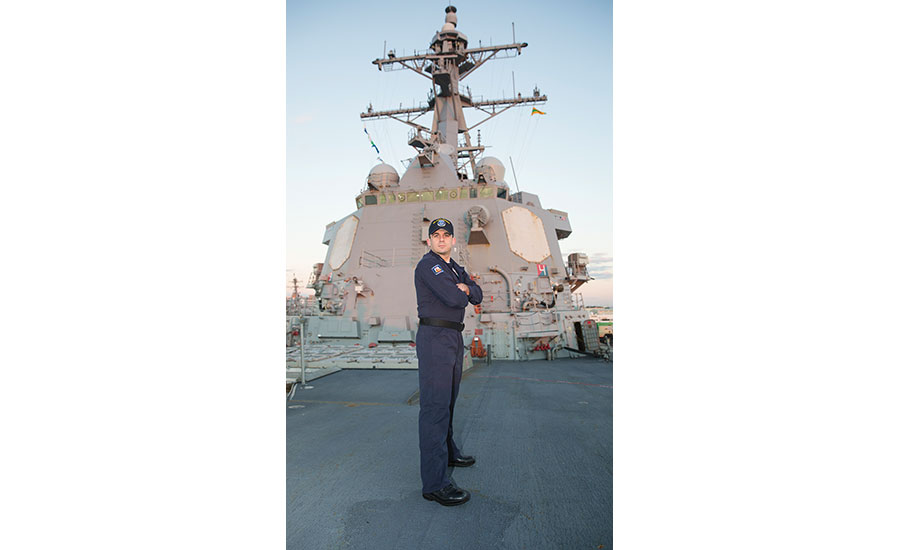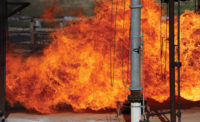Navy FR program offers valuable lessons
First comes testing, then detailed instructions

Mass Communication Specialist 2nd Class Michael Fiorillo poses in the IFRV coverall aboard the guided-missile destroyer USS James E. Williams.
U.S. Navy photo by Mass Communication Specialist 2nd Class Stacy M. Atkins Ricks/Released.
Private sector companies could take a few lessons from the U.S. Navy when it comes to implementing and managing their flame resistant (FR) clothing programs. Earlier this year, the Navy announced the introduction of a new piece of FR apparel for sailors stationed aboard ships and submarines.1 What the Navy did right: 1) It introduced the new Improved Flame Resistant Variant (IFRV) coverall only after extensive testing specific to situations in which the wearers might find themselves; and 2) It provided the wearers with detailed instructions for use.
The new IFRV replaces the Flame Resistant Variant (FRV), an earlier FR coverall that was found to have comfort and durability issues.
“The original FRV was rapidly introduced to the fleet because Sailor safety is our top priority,” said Capt. Mark Runstrom, director, Fleet Supply Operations/Services, USFF. “However, we recognized immediately that we needed a coverall that is more durable, functional, and comfortable as well as safe. That is what the IFRV is all about.”
Stronger protection
The IFRV coverall is made from a flame resistant, tri-fiber blend designed to offer arc flash protection and provide improved moisture management by allowing the fiber to breathe more efficiently. It is also designed for sustained durability and will last nearly twice as long as the FRV.
The Navy says the IFRV will be worn as an underway uniform and for events such as sea and anchor detail. Commands can authorize the IFRV for wear ashore or in-port and when a sailor is working in conditions where excessive wear to the uniform could occur or when needing arc or flash protection.
The approval of the IFRV as a fleet organizational clothing item to replace the legacy FRV coverall came only after the completion of a series of afloat wear tests.
In the “manner and occasion of wear guidance” issued by the Commander of U.S. Fleet Forces (USFF), sailors are told that they will don full sleeves and secured fastenings and that the current nine-inch black, steel-toed boot and Navy or command ball caps are authorized for wear with the coverall. Even the type of belts that may be worn with the IFRV coverall are specified (a black cotton web belt for E1-E6, a khaki cotton web belt for chief petty officers and officers and rigger’s belts at command discretion).
Leaving no doubt
Due to the risk of degrading the flame resistant fabric, sailors will not be allowed to stencil or serialize any portion of outer fabric of the IFRV nor attach unit or flag patches, but they can stencil the inner parts for identification purposes. Velcro-backed name tags can be attached to the coveralls. Naturally, the Navy is precise in its directions for those: they must be worn centered and ¼ inch above the left breast pocket.
Sailors stationed aboard ships and submarines will be issued a minimum of two of the IFRV coveralls.
The Navy’s FR clothing program is continually evolving. Because feedback during fleet testing of the IFRV revealed a desire for a two-piece FRV, the USFF has developed several options with varying design features that will be tested this year. If and when a two-piece FRV proves itself effective through testing, it will be accompanied by detailed manner and occasion of wear guidance that will leave its wearers with no doubts as to when and how to wear it.
Looking for a reprint of this article?
From high-res PDFs to custom plaques, order your copy today!






